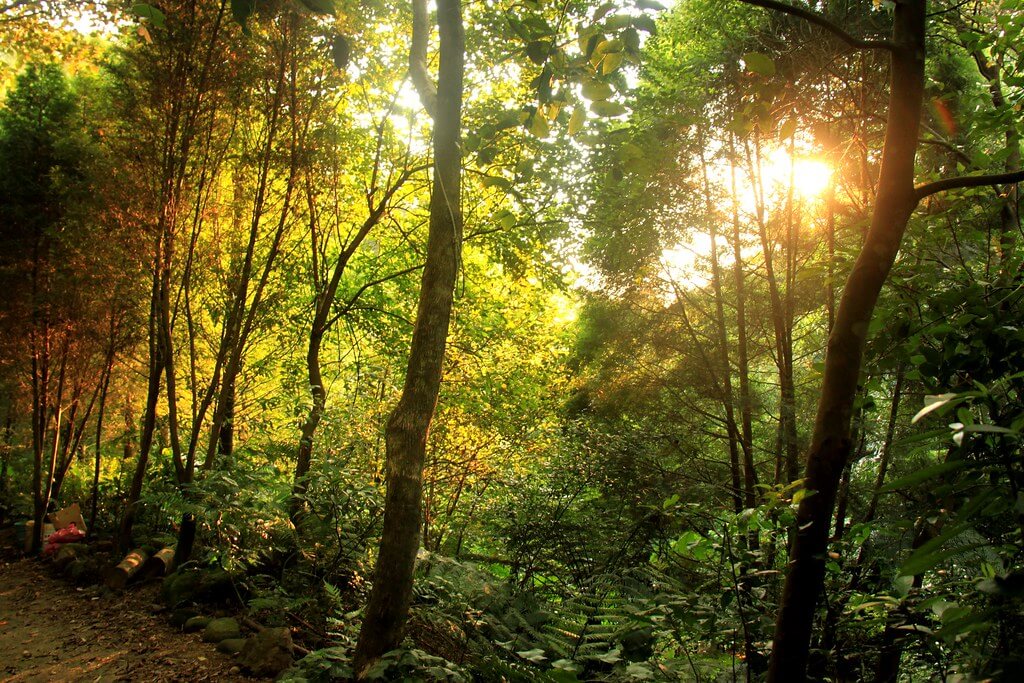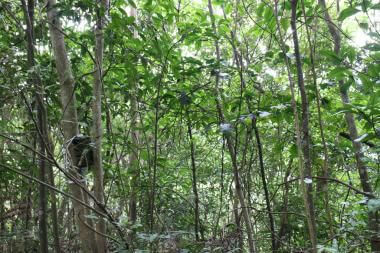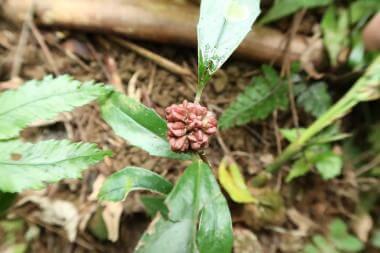【2015-06-08 The China Post, By John Liu】
TAIPEI, Taiwan The over excavation of lowlying hills has defaced many parts of Taiwan’s natural terrain, causing soil erosion and endangering indigenous species like the leopard cat, yellow pond turtle and mountain scops owl. But there is a safe haven for them in Hsinchu County’s Cyonglin Township (芎林鄉).
Covering 1.8 hectares and sitting 380 meters above sea level, Nature Valley (自然谷) has been restored bit by bit to its original terrain.
Purchased by three environmental enthusiasts for NT$6 million in 2007, Nature Valley is the nation’s first and only environmental trust. After years of laborious conservation efforts, Nature Valley now boasts 262 different species of vascular plants —22 of which are native — such as the Taiwan Maesa, the vessel fern and the Chinese hydrangea. Critters like the flying squirrel, Taiwan blue magpie and pangolin have also returned to the forest, and now up to 162 species of spiders can be found in the valley.
Earlier this year, Taipei 101 donated more than NT$1 million to Nature Valley to support Taiwan lowlying valleys’ restoration. Nature Valley was entrusted to the Taiwan Environmental Information Association (TEIA, 台灣環境資訊協會) in May 2014. Under the environmental trust, the TEIA is the valley’s custodian but has no ownership rights to the valley. (Once placed under trust, the ownership of the valley belongs to the public.) The TEIA’s job is carrying out conservation activities according to its legal obligations.
Extensive Conservation Efforts
The TEIA has three objectives as the Nature Valley’s longtime custodian. First, it protects and cultivates lowlying forests. Second, it collaborates with local communities to expand areas of protection. Third, it operates a nature learning center for the public.
There is much to be done to keep the forest healthy. Among the activities is thinning out packed bamboo by cutting down old ones that may restrain other plants’ growth. The cut bamboo is then lined up on slopes to minimize erosion due to rainfall.
In addition, pebbles and stones in streams need to be removed to avoid blockage. The stones can be utilized again and stacked on slopes to forestall erosion and landslide.
In addition, the TEIA’s workers also walk the mountain trails on a daily basis, taking note of any changes in the landscape. They take meticulous care of the area — to such an extent that they even transplant tree buds growing on the trails in order to ensure their survival.
The association has also set up a database that details the valley’s ecological system, allowing its workers to keep track of any changes. A report on Nature Valley’s natural resources released last year details the plants, birds, insects and reptiles found in the environment.
Working Holidays
The organization holds “working holidays” on a monthly basis. It gives people who are tired of city life a chance to experience the wilderness and — at the same time — perform conservation work.
Participants on the working holiday learn about organic farming: growing fruits and vegetables using natural fertilizer and without using pesticides. Bamboo rice cooking is sometimes offered to add flavor to the mountain life experience.
The holidays are as much a green tour as a cultural immersion experience. As part of the green tour, TEIA’s guides impart information about local foliage and the local ecological system to participants.
The TEIA also teaches participants about the local culture. There are traces of aboriginal people and Hakka people who once lived around the hill; Bamboo is an important construction material used by aboriginal people. There are Hakka villages down the hill, and the participants are treated to Hakka dishes during their stay.
‘More Nature Valleys’ in the Future
An important reason that the TEIA holds the working holidays is to train volunteers who will help conserve the valley in the future. This is critical since conservation takes a lot of time and effort. The TEIA has dispatched three fulltime employees living on the remote hill to carry out conservation work. However, the workload of conserving 1.8 hectares of land is beyond what three people can manage.
The area does not support a mobile phone signal and so the landline is the only reliable means of communicating with the outside. As a result, Nature Valley is for people who truly love nature.This passion about nature is apparent when Wu Chiachi(吳佳奇), one of the fulltime workers living in the valley, talked about how she was shocked by how people harmed Mother Earth.
Recalling her experience at the coast one day, Wu said, “The beach is filled with garbage. There is so much that I could never have picked it all up … and you wonder why there are toilet seat covers and sanitary napkins in the sea.” Wu Jefon(吳杰峰), one of the three people who purchased Nature Valley years ago, said the land was bought for conservation purposes. The three conducted their own conservation efforts in the beginning, but later decided that putting it under an environmental trust was a better approach.
The merits of an environmental trust include “public participation,” “information transparency” and “sustainability.” Under the signed contract, Nature Valley’s custodian, the TEIA, will supervise and manage the valley for the long haul without a term limit. Although the environmental trust concept has long been implemented around the world — more than 100 years in the United Kingdom and 70plus years in Japan — the concept is still very new in Taiwan, and it is the TEIA’s to dream to create more Nature Valleys on the island in the future.
Copyright © 1999 – 2015 The China Post.






